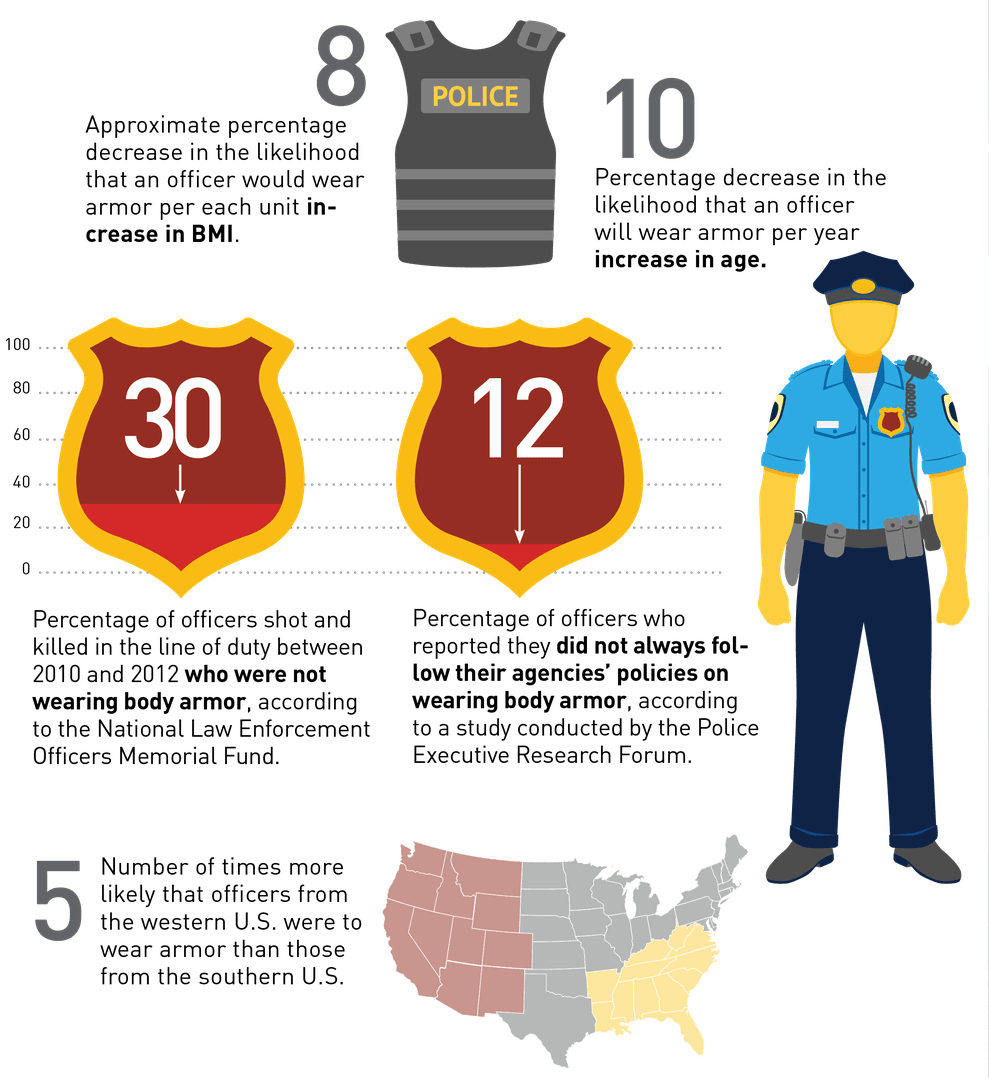DEPARTMENTS
BY THE NUMBERS
Effectiveness of Body Armor in Law Enforcement
A new study published in the
Journal of Occupational and Environmental Hygiene
(JOEH) shows that law enforcement officers who were wearing body armor when they were shot by a firearm in the torso were 77 percent less likely to die from their injuries than those who did not wear armor.
Using data from the Law Enforcement Officers Killed and Assaulted (LEOKA) database, the authors analyze the association between officers’ individual characteristics and the likelihood of wearing body armor and the conditional association between wearing body armor and the likelihood of dying from a shooting to the torso, while controlling for various factors. According to the researchers, a number of factors influence officers’ armor-wearing behavior, including age, body mass index (BMI), rank, geographic region, and type of assignment. Information from the JOEH study appears below.
From “The Effect of Body Armor on Saving Officers’ Lives: An Analysis Using LEOKA Data”:
“Officers who are in general least likely to survive from fatal injuries (older and/or overweight) in a region with more gun attacks against police (the southern U.S.) are the least likely to wear armor, indicating that police agencies need to target older, overweight officers, and those assigned to detective and undercover assignments, when enforcing armor-related policies, and that agencies in the south need to pay special attention to mandatory wearing policies.”
SOURCE
JOEH: “
The Effect of Body Armor on Saving Officers’ Lives: An Analysis Using LEOKA Data
” (January 2017).Tap on the graphic below to open a larger image in your browser.
Editor's Note: Fumes vs. Vapors
The original wording from the Center for Public Integrity's report "Common Solvent Keeps Killing Workers, Consumers" mistakenly refers to "fumes" in a context where "vapors" is the correct term. The Synergist has corrected this error in the digital edition.
Unfortunately, the error found its way into the print version of the November issue. The Synergist regrets the error and will publish a correction in the December issue.
Ed Rutkowski, editor
thesynergist | TOC | NEWSWATCH | DEPARTMENTS | COMMUNITY
thesynergist | TOC | NEWSWATCH | DEPARTMENTS | COMMUNITY

